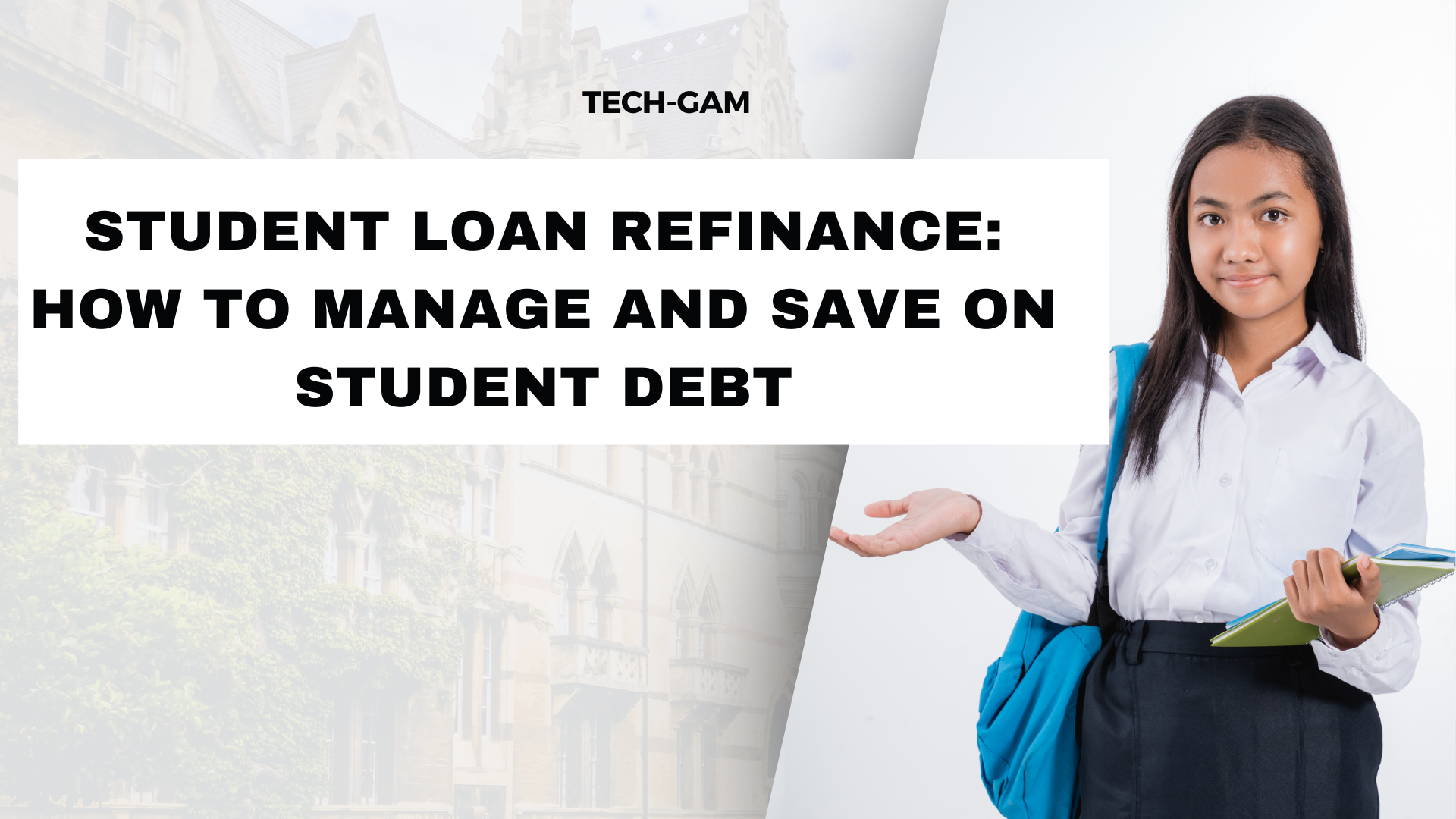Introduction
Student loans now fund much of higher education. Many students and graduates have large debts. Student loan refinancing is a great tool for borrowers. It can reduce payments, secure better rates, or simplify loan management. This article will cover the basics of refinancing. It will discuss its benefits and how to decide if it’s right for you.
What is Student Loan Refinancing?
Student loan refinancing involves taking out a new loan to pay off one or more existing student loans. This new loan usually has a lower interest rate. It saves borrowers money over the loan term. Student loan refinancing can also consolidate multiple loans. It creates a single monthly payment. This simplifies loan management for borrowers with several payments.
Key Benefits of Refinancing Student Loans
Refinancing can offer several advantages, including:
Lower Interest Rates: Refinancing often secures a lower interest rate, reducing the overall cost of the loan.
Simplified Payments: Consolidating multiple loans into a single payment streamlines student financing.
Flexible Terms: Borrowers can often choose repayment terms. This can help align with their financial goals, like reducing monthly payments or paying off debt faster.
How Does Student Loan Refinancing Work?
When you refinance, a private lender pays off your existing student loans and issues a new loan at a new interest rate. Here’s a step-by-step breakdown:
Assess Your Loans: Find your loan balances, rates, and monthly payments.
Check Your Credit: A high credit score improves your chances of securing a lower interest rate.
Research Lenders: Various private lenders offer refinancing. Each has its own terms, rates, and conditions.
Submit Applications: You can pre-qualify with several lenders to compare rates. It won’t affect your credit score.
Accept the Best Offer: Once you find the best rate and terms, finalize the refinancing.
When to Consider Refinancing Your Student Loans
Refinancing isn’t the right solution for everyone. Here are some situations when student loan refinancing could be beneficial:
High-Interest Private Loans
If you have high-interest private student loans, consider refinancing. It may help you get a better rate, especially if your credit score has improved since you borrowed.
Stable Financial Situation
Borrowers with stable incomes and good credit are more likely to qualify for low-interest refinancing. If you can make consistent monthly payments, refinancing can save you money over time.
Simplifying Loan Management
For borrowers with multiple loans, refinancing can help. It can simplify payments by consolidating them into a single, monthly bill. This approach can reduce the stress of managing student financing and make budgeting easier.
Pros and Cons of Student Loan Refinancing
Advantages of Refinancing
Interest Savings: Refinancing can result in lower interest costs over the life of the loan.
Shorter or Extended Terms: Borrowers can choose terms that fit their financial goals.
Streamlined Payments: Consolidating loans leads to easier student loan management.
Potential Downsides
While refinancing can be beneficial, there are some drawbacks to consider:
Loss of Federal Protections: Refinancing federal loans with a private lender means losing benefits. These include income-driven repayment and loan forgiveness.
Credit-Based Approval: Refinancing usually needs a good credit score and stable income. So, not all borrowers may qualify.
Steps to Finding the Right Student Loan Refinance Option
If you’re considering refinancing your student loans, here are essential steps to help you make the best decision:
Shop Around for the Best Rates: Research various lenders to find competitive rates. Many lenders allow you to pre-qualify, so you can compare rates without affecting your credit.
Evaluate Your Financial Goals: Do you want to lower your monthly payments, pay off your loan sooner, or reduce the total interest?
Check for Fees: Some lenders charge fees for refinancing. Be aware of any application, origination, or prepayment penalty fees.
Consider the Loan Terms: Choose a loan term that fits your financial goals. Shorter terms often have lower rates but higher monthly payments. Longer terms may lower your monthly cost but raise overall interest.
Popular Lenders for Student Loan Refinancing
Various lenders specialize in student loan refinancing, each offering unique terms and benefits. Here’s a list of some well-known options:
SoFi: Known for its low-interest rates and various repayment terms.
Earnest: Offers customizable repayment plans tailored to individual needs.
LendKey: Works with credit unions to offer competitive rates and student-friendly terms.
CommonBond: Offers a social mission-driven approach with competitive rates and flexible terms.
Tips for Managing Student Loans Post-Refinancing
Refinancing can help you manage your loans. But, here are more ways to manage student debt after refinancing:
Automate Payments: Set up automatic payments to avoid late fees and ensure timely payment.
Consider Bi-Weekly Payments: Making bi-weekly payments can reduce interest and help you pay down your debt faster.
Take Advantage of Discounts:
Some lenders offer discounts for automatic payments.
Bundling with other financial products may reduce rates.
Regularly Review Your Budget: Recheck your budget to meet your payment goals.
Conclusion
Student loan refinancing can help reduce and manage debt. Refinancing can simplify your student loan management and save money. You can do this by getting a lower interest rate, consolidating loans, or choosing a better repayment term. However, you must consider your finances and goals before refinancing. Refinancing can, with the right approach, ease your student loans. It can make payments manageable and affordable. You’ll then be able to focus on your future goals.

